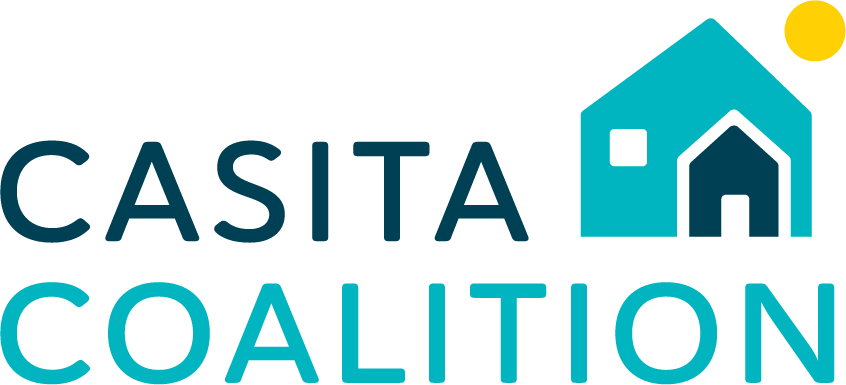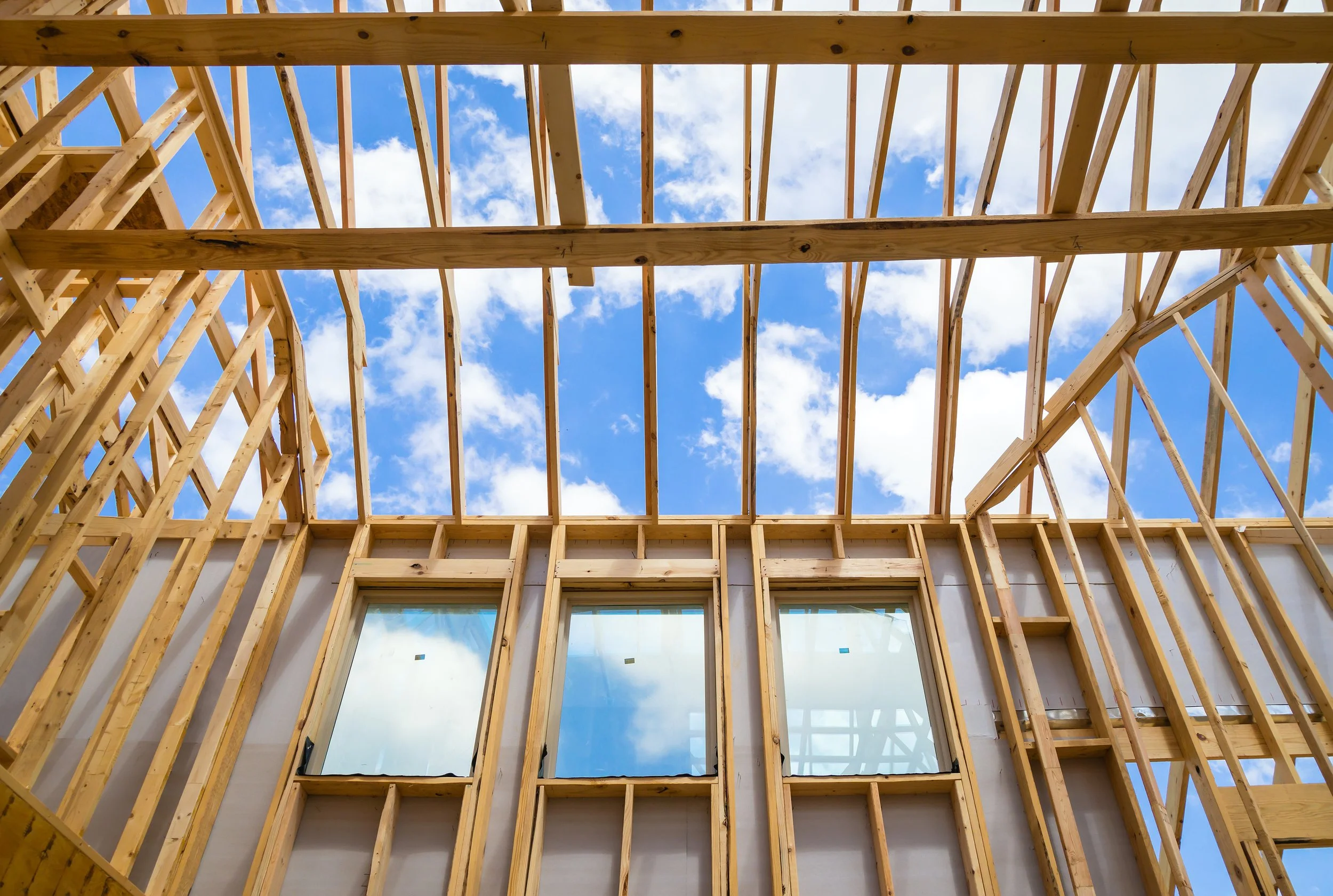Introducing Casita Coalition’s ADUs and Fire Recovery Toolkit
In January 2025, the Altadena and Pacific Palisades fires devastated communities in Los Angeles, destroying homes and disrupting thousands of lives. After the immediate response—providing food, shelter, and support—residents began navigating cleanup, insurance, and rebuilding. Today, as rebuilding gets underway, many homeowners are facing difficult decisions about how to move forward.
This toolkit is designed to support homeowners in the planning phase of recovery–offering clear information and resources about accessory dwelling units (ADUs) as a flexible option for rebuilding.
In California, homeowners have multiple options for adding separate living spaces on their property to help meet their family’s needs. Understanding these options is the first step!
Casita Coalition, a statewide nonprofit focused on housing affordability, collaborated with the Wells Fargo Foundation to create the ADU & Fire Recovery Toolkit—a practical resource for homeowners exploring accessory dwelling units (ADUs) or junior ADUs (JADUs) as part of their rebuilding journey after the Los Angeles fires.
Casita Coalition’s founders helped write California’s first statewide ADU laws with one guiding belief: homes should be flexible enough to meet changing needs. That flexibility is especially vital in times of recovery.
This toolkit offers clear, step-by-step guidance to help homeowners in Altadena and Pacific Palisades understand how ADUs can speed up their return home, generate rental income, and support long-term family stability. As a living resource, this page will continue to grow—adding tools, updates, and information. But first, let’s start with the basics.
-
An Accessory Dwelling Unit is a separate, self-contained living space that contains all the necessities for living.
ADUs may be a detached structure, an addition to your home, or may be converted from existing space in your home or in a detached structure, such as a garage.
A Junior ADU, or JADU, can also be converted from existing space in a home. They only require a kitchenette and separate entrance–bath may be shared
ADUs may be added to multifamily properties as well–a duplex is allowed one ADU; properties with 8 or more units may add up to 8 detached ADUs and 25% of the unit count as conversion ADUs of existing non-habitable space
-
Built from the ground-up, using traditional site-built construction (typically wood framing)
Build off-site in a factory
Modular and prefab ADUs
Manufactured ADUs
Panelized construction
-
One detached ADU
One conversion ADU (may be converted from existing space in the main home or in a detached structure, like a garage
One Junior ADU (requires owner occupancy if the bath is shared with primary home)
-
From LA County:
The term “like-for-like” is defined by the Zoning Code. A like-for-like replacement structure must be the same size, in the same location, and for the same use as the previous structure. In the Palisades Fire affected area, a like-for-like replacement structure may be approved with modifications that do not increase the floor area, size, height, or building footprint by more than 10%. In the Eaton Fire affected area, a like-for-like replacement structure may be approved with modifications that do not increase the floor area, size, height, or building footprint by more than 10% or 200 square feet, whichever is greater.
If the above requirements are met, like-for-like replacement structures can have a different internal floor plan or be smaller than the damaged or destroyed structure.
Like-for-like replacement structures do not need to comply with current Zoning Code requirements. However, they need to comply with current Building Code, Fire Code, and Health and Safety Code requirements.
-
ADUs have streamlined permitting and lower costs for permits
You can build and live in an ADU before you complete your main home rebuilding
They provide flexible options for multigenerational living
-
Executive Orders from the Governor and the Mayor of Los Angeles created special allowances in rebuild projects, including:
ADU may be built first
Homes may be built to 2022 building code standards
Solar panel and battery storage requirements are waived
Temporary housing allowed on fire-impacted sites
Permit and planning fees waived for rebuilding of homeowner-occupied properties
Rebuilding Basics
Temporary Housing: Know the Rules
Once your lot is cleared, you can get a permit to live on your property in temporary housing for up to 3 years.
Can be an RV, a moveable tiny home on wheels, or a manufactured home
Fast permits–but must meet public health standards
-
Residents of LA County go to: https://recovery.lacounty.gov/rebuilding/temporary-housing/
Residents of the City of Los Angeles should go to: https://dbs.lacity.gov/
Pasadena residents should go to: https://www.cityofpasadena.net/planning/recovery-virtual-consultations/
Residents of Malibu should go to: https://maliburebuilds.org
Sierra Madre residents should go to: https://www.sierramadreca.gov/
-
Altadena One-Stop Permit Center464 W Woodbury Rd. Suite 210Altadena, CA 91001
Walk-In Hours:Monday – Friday: 8:00AM – 4:30PM
City of Los Angeles One-Stop Rebuilding Center1828 Sawtelle Blvd.Los Angeles, CA 90025 Hours: Monday - Friday: 9:00 AM - 5:00 PM, Saturday & Sunday: Closed
Representatives from the following departments are onsite:
Bureau of Street Services
Bureau of Sanitation
Department of Transportation
Housing Department
Department of Building and Safety
Department of City Planning
Los Angeles Fire Department
Bureau of Contract Administration
Bureau of Engineering
LA DWP Unified Utilities Rebuild Operations Center
This one-stop, full-service center was established to help customers and contractors coordinate directly with LADWP on the rebuilding and restoration of water and power services in Pacific Palisades.
UUROC3931 South Topanga Canyon Blvd.Malibu, CA 90265Hours: M-F, 8:00 AM - 4:00 PM
-
Homeowners looking to rebuild due to the Eaton and Palisades wildfires may be able to use a pre-approved standard plan. Pre-approved standard plans and streamlined permitting processes can help homeowners rebuild more efficiently, safely, and affordably.
The benefits of using pre-approved plans include:
Shortened review timeframe
Predictable review process
Reduced design cost
Foothill Catalog https://www.foothillcatalog.org/the-catalog
LADBS Preapproved Standard ADU Plans https://www.ladbs.org/adu/standard-plan-program/approved-standard-plans
LA County preapproved plans https://planning.lacounty.gov/disaster-recovery/pre-approved-standard-plans/
-
CalAssist Mortgage Fund
CalAssist Mortgage Fund is a state program that provides much-needed relief from mortgage payments for displaced families whose homes were destroyed or left uninhabitable by a California disaster such as the Los Angeles wildfires or floods.
3 months of mortgage payments, up to a maximum of $20,000
Funds never have to be repaid and it’s free to apply
Grants paid directly to your mortgage servicer
https://www.calassistmortgagefund.org/
Steadfast LA
Steadfast LA Foundation is committed to helping victims of the devastating wildfires in Los Angeles County rebuild their home, lives, and communities. In collaboration with modular homebuilders such as Samara and program collaborators HomeAid OCLA, loanDepot, and Armanino Advisory LLC, through our Modular Housing Initiative we will provide financial assistance to eligible individuals and families who lost their homes during the wildfires by providing grants to help them obtain new modular homes. Fire victims in Altadena, Malibu, Pasadena and Pacific Palisades who lack the economic resources to rebuild may be eligible for Modular Housing Grants. https://www.steadfastla.com/modular-home-application
Small Business Administration
SBA disaster assistance for homeowners, renters, nonprofits, and businesses of all sizes affected by the wildfires and straight-line winds in California. Deadline for economic losses Oct 15, 2025.
https://www.sba.gov/funding-programs/disaster-assistance/california-wildfires
Office of: Office
If you have been impacted by the fires in Los Angeles and need architecture, planning, or design support in rebuilding your home, please submitHERErequest with information on your property and needs.
https://officeofoffice.com/projects/rebuilding-response-eaton-palisades/
LA County Recovers
The LA County Board of Supervisors approved a motion to waive and refund fees for qualifying property owners rebuilding single-family homes in unincorporated Los Angeles County following the Eaton and Palisades wildfires.
To apply for a fee waiver, please fill out aRequest for Fire Rebuild Fee Waiver or Refund form and email it to recovery@planning.lacounty.gov. Print versions of this form will also be accepted at theOne-Stop Permit Centers.
https://recovery.lacounty.gov/rebuilding/fee-waivers-and-refunds/
-
Both the City of Los Angeles and the County offer extensive FAQs that can help with common questions.
Los Angeles County Public Works FAQs on Rebuilding
https://pw.lacounty.gov/rebuild/faq
LA County Fire Rebuilding FAQs
Coming Next:
ADU development process steps from start to finish
Financing
Insurance considerations
Selecting and engaging with ADU professionals–fraud prevention, best practices
Lower-cost ADU options

















